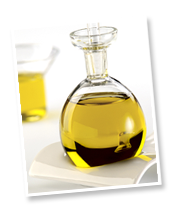
|
 Olive oil is a condiment that has made history of Mediterranean cuisine for thousands of years. In fact, one should focus on the olive tree itself to realize that it is characteristic of the Mediterranean region. Olive oil is a condiment that has made history of Mediterranean cuisine for thousands of years. In fact, one should focus on the olive tree itself to realize that it is characteristic of the Mediterranean region.
Based on an ancient practice, the process of extracting olive oil is relatively simple, and was practiced in rural Spain, Italy or Greece.
Provence, where Francexim is now located, is also famous for its production of olive oil.
But even if improving the quality of olive oil was accompanied necessarily by a complex production process it still relies on the same basis: the crushing of olives to release the oil they contain.
|
|
|
|
 The olive harvest is the first step in the making of olive oil. Traditionally, olive trees were beaten to release their olives, however today many producers use commercial machines to pick olives. The olive harvest is the first step in the making of olive oil. Traditionally, olive trees were beaten to release their olives, however today many producers use commercial machines to pick olives.
Once the olives have been picked, the process starts and the time is counted, the olives must be transported to oil mills as soon as possible otherwise the acidity will be too high, which would affect the taste.
Once at the mill, the olives are sorted and cleaned to get rid of their branches and foliage.
Once cleaned, the olives are crushed in the mill and turned into a paste, the paste is then sent in the process of kneading.
After being kneaded, the olive paste is put under pressure to extract liquid oil and water from the fruit. Olive oil is then separated from the water generally using a centrifugal and oil is then bottled. Olive oil with an acid level measurement less than 0.8% is considered "extra virgin" and has a very rich and intense flavor.
|
|
|
|
|
|
Cours au 07/12/2025: €/t - t
|
| Average prices of the last recorded contracts en €/t |
|
| Volume of the last recorded contracts en €/t |
|
|
